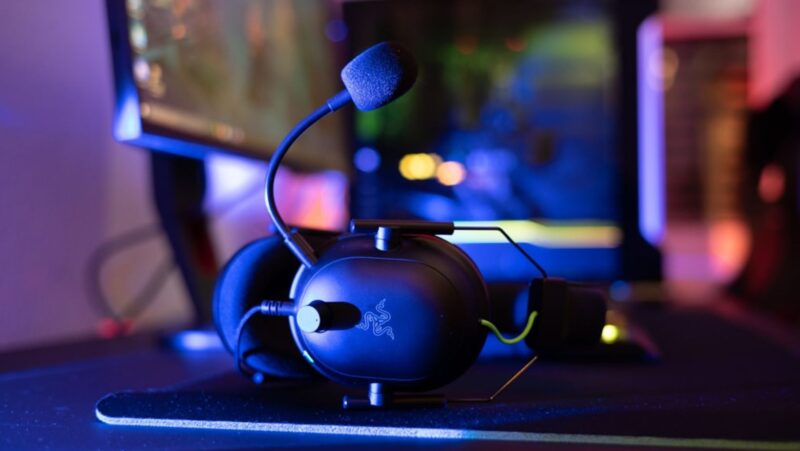
The modern operational environment demands constant connectivity for U.S. Army personnel. The rise of Bring Your Own Device (BYOD) policies reflects a strategic move toward greater flexibility, efficiency, and morale. By allowing service members, civilians, and contractors to use their personal smartphones and tablets for official work, the Army can enhance productivity and ensure personnel remain connected, whether at home, on base, or deployed OCONUS. However, this convenience introduces a complex array of cybersecurity challenges. Securing sensitive government data on personal devices requires a sophisticated approach that balances access with stringent security protocols.
The core dilemma of any BYOD program is safeguarding Controlled Unclassified Information (CUI) and other sensitive data without infringing on the personal privacy of the device owner. Traditional security methods, such as Mobile Device Management (MDM), often require installing software that gives the organization extensive control over the device. This can include the ability to wipe the device remotely, access personal information, and enforce strict hardware compliance. For soldiers, this creates a significant privacy concern and operational burden. A lost or compromised phone could lead to a total data wipe, including personal photos, messages, and contacts. This tension between security and privacy has been a major hurdle in the widespread adoption of BYOD within the Department of Defense (DoD).
Successfully implementing a BYOD strategy in the Army hinges on overcoming this challenge. The goal is to provide seamless access to essential systems like Army 365, Teams, and the Non-classified Internet Protocol Router Network (NIPRNet) without government data ever touching the physical device. This requires a new model of secure access, one that isolates the work environment from the personal one completely.
The Inherent Vulnerabilities of Traditional BYOD
Traditional BYOD models create a direct link between the secure government network and the end-user’s personal device. This connection, even when managed by MDM solutions, presents several inherent vulnerabilities. Personal devices are part of a vast, uncontrolled ecosystem. Users may download unvetted applications, connect to unsecured public Wi-Fi networks, or delay critical operating system updates, creating potential entry points for malicious actors.
A 2022 cybersecurity report highlighted that mobile malware attacks are increasingly sophisticated, with threat actors targeting personal devices to gain a foothold into corporate or government networks. When government data is stored locally on a device—even in an encrypted container—it remains at risk. If the device is lost, stolen, or compromised, that data is physically outside the military’s secure perimeter. The consequences of a data breach can be severe, ranging from the exposure of mission-critical information to compromising the personal details of Army personnel.
Furthermore, the logistical overhead of managing a diverse fleet of personal devices is substantial. Ensuring every device meets DoD compliance standards is a constant battle. This approach also complicates the user experience. Personnel must carry multiple devices—one for personal use and another for work—or subject their personal phone to invasive controls. This friction undermines the very convenience that a BYOD program is meant to offer. A more effective solution must decouple government data from the end-user device entirely, ensuring that the personal phone is simply a portal for access, not a repository for data.
A New Paradigm: Virtualization and Zero-Trust
To address the security and privacy gaps in traditional BYOD, defense agencies are turning to a zero-trust architecture powered by virtualization. This model operates on a simple but powerful principle: never trust, always verify. Instead of focusing on securing the endpoint device, this approach focuses on securing the data at its source. Access is granted through a virtualized environment that is streamed to the user’s device as pixels. No data is ever downloaded, stored, or processed on the local hardware.
This “zero-data-at-rest” approach fundamentally changes the security equation. The user’s personal device becomes a simple display terminal. All applications and data reside in a secure, remote environment controlled by the Army. Solutions like Hypori are built on this principle, offering a virtual workspace that runs on a remote server. The user interacts with this workspace through a dedicated app, but their personal data, photos, and apps remain completely separate and untouched. The Army gains the security it needs, and the soldier retains their privacy.
This architecture has several key security advantages:
- Complete Data Isolation: Since no data is stored on the device, the risk of data leakage from a lost or compromised phone is eliminated. If a device is lost, there is nothing to wipe or confiscate because no government data was ever on it.
- Centralized Control and Monitoring: Security patches, application updates, and access policies are managed centrally in the remote environment. This ensures 100% compliance without needing to touch thousands of individual devices.
- Reduced Attack Surface: The user’s device is not directly connected to the NIPRNet. The streamed virtual session isolates the secure network from any potential threats on the physical device, such as malware or insecure network connections.
- Enhanced User Privacy: The organization has no visibility or control over the user’s personal activities on their device. This separation is crucial for user adoption and morale, as it removes the fear of personal intrusion.
This model allows Army personnel to access CAC-enabled websites, digitally sign documents, and use encrypted email directly from their personal phones without a physical CAC reader. Digital credentials, managed through systems like Purebred, are associated with the virtual workspace, not the physical phone, enabling secure authentication from anywhere.
The Operational Advantages of a Secure BYOD Program
Implementing a secure, zero-trust BYOD program delivers more than just cybersecurity benefits. It provides significant operational advantages that directly support the Army’s mission. When soldiers can securely access IPPS-A, Defense Travel System (DTS), and Army 365 from their personal phone, they can manage administrative tasks, training, and communications on the go. This level of readiness and flexibility is critical in a dynamic global environment.
For exchange officers, personnel stationed OCONUS, or Guard and Reserve members, reliable access to NIPRNet is often a challenge. VPNs can be unreliable or blocked by local internet service providers. A virtualized solution like Hypori bypasses these issues by streaming a NIPRNet session directly to the device, providing consistent access regardless of the user’s location or local network restrictions. This ensures that a soldier serving in Italy or a reservist at home has the same secure access as someone on a stateside base.
The ability to operate from a single device also simplifies logistics. It eliminates the need to issue, manage, and carry a second, government-furnished phone. This reduces costs, lessens the soldier’s physical load, and streamlines day-to-day work. The Army can achieve its goal of a more connected and agile force while strengthening its security posture and respecting the privacy of its people. By leveraging a zero-trust, virtualized approach, BYOD transitions from a security risk to a strategic enabler.
Final Analysis
The implementation of a successful BYOD program within the U.S. Army is a critical step toward modernizing its workforce and enhancing operational readiness. However, the path is fraught with cybersecurity risks if not approached with a strategy that prioritizes both data security and user privacy. Traditional MDM solutions fall short, creating friction and leaving data vulnerable on personal endpoints. The future of secure military mobility lies in a zero-trust architecture that separates data from the device.
By adopting a virtualized approach, the Army can provide seamless access to critical systems without ever storing sensitive information on a soldier’s personal phone. Solutions like Hypori demonstrate the power of this model, offering a secure, remote workspace that is streamed to the user’s device. This ensures that if a phone is lost or compromised, no government data is at risk. It gives the Army centralized control over its data while providing personnel with the privacy and convenience they expect. This balance is not just a technical achievement; it is a fundamental requirement for building a modern, agile, and effective fighting force.


